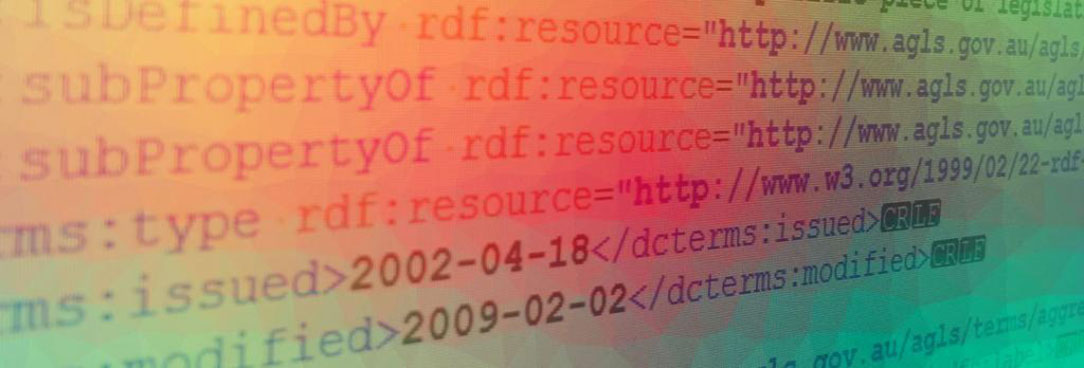What is metadata?
Metadata for recordkeeping refers to descriptive information about the content, context, structure and management of records.
It can be created, captured and managed automatically by a piece of software or system, manually by a person, or by using a combined approach.
Metadata about records may be held across a number of different systems within an agency, including recordkeeping and/or business systems.
Why is metadata important?
Metadata is essential to manage and preserve records, ensure they are findable and accessible over time, and maintain their authenticity. It provides descriptive information about when, how and by whom a record has been:
- created or captured
- used (e.g. viewed or accessed)
- managed (e.g. transferred, reviewed, sentenced)
- preserved (e.g. migrated, converted).
Metadata must be maintained and updated throughout the life of the record as evidence of the record’s authenticity and to ensure it remains usable to the agency.
What metadata should you capture?
Minimum mandatory metadata
PROV has developed PROS 19/05 S2 Minimum Metadata Requirements Specification—a set of minimum mandatory metadata elements required for use in Victorian Government agencies. This specification outlines:
- metadata elements that must be captured for all records
- additional metadata elements that must be captured for high value records and records with long term or permanent retention periods.
A metadata standard sets out rules about how to use metadata. It will generally specify which elements to use, the relationship between elements, and usage obligations (i.e. whether using each element is mandatory, conditional or optional).
PROV’s minimum mandatory metadata set has been written to be compatible with the following established metadata standards:
- Australian Government Location Service (AGLS) Metadata Standard
- Australian Government Recordkeeping Metadata Standard (AGRkMS)
- AS/NZS 5478:2015 Recordkeeping Metadata Property Reference Set.
|
To meet PROV requirements, agencies must capture metadata elements that are the same or equivalent to the elements that appear in the PROV minimum set. Terms with alternate names can be used as long as their use aligns to the meaning of the element descriptions in the PROV minimum set. |
Additional metadata
PROV’s minimum mandatory metadata set is designed as a starting point for agencies. Your organisation may benefit from capturing a broader range of metadata to support business needs, minimise risk and meet legislative requirements.
When deciding what additional metadata to capture, consider:
- the value of the records and any risk associated with them (e.g. age, current accessibility, unstable or unusual formats)
- what metadata is needed for the business and to meet legislative requirements
- whether your agency uses (or could benefit from using) an established metadata standard
- whether a controlled vocabulary is required
- how long the metadata must be kept
- how the metadata will be managed over the record’s lifecycle
- whether relationships between records and systems need to be captured.
Where an established metadata standard is being used in addition to PROV’s minimum metadata set, take note of the usage obligations for metadata elements set out in that standard. Elements specified as mandatory by PROV must be captured even if they are not mandatory in another metadata standard.
Metadata elements that are ‘conditional’ in any standard (e.g. capture of the metadata element is required in certain circumstances) become mandatory when the condition exists.
Where an established metadata standard is not being used to govern an agency’s approach to applying and managing metadata in its systems, the agency should document its approach to ensure the meaning of metadata elements does not shift or become lost over time.
